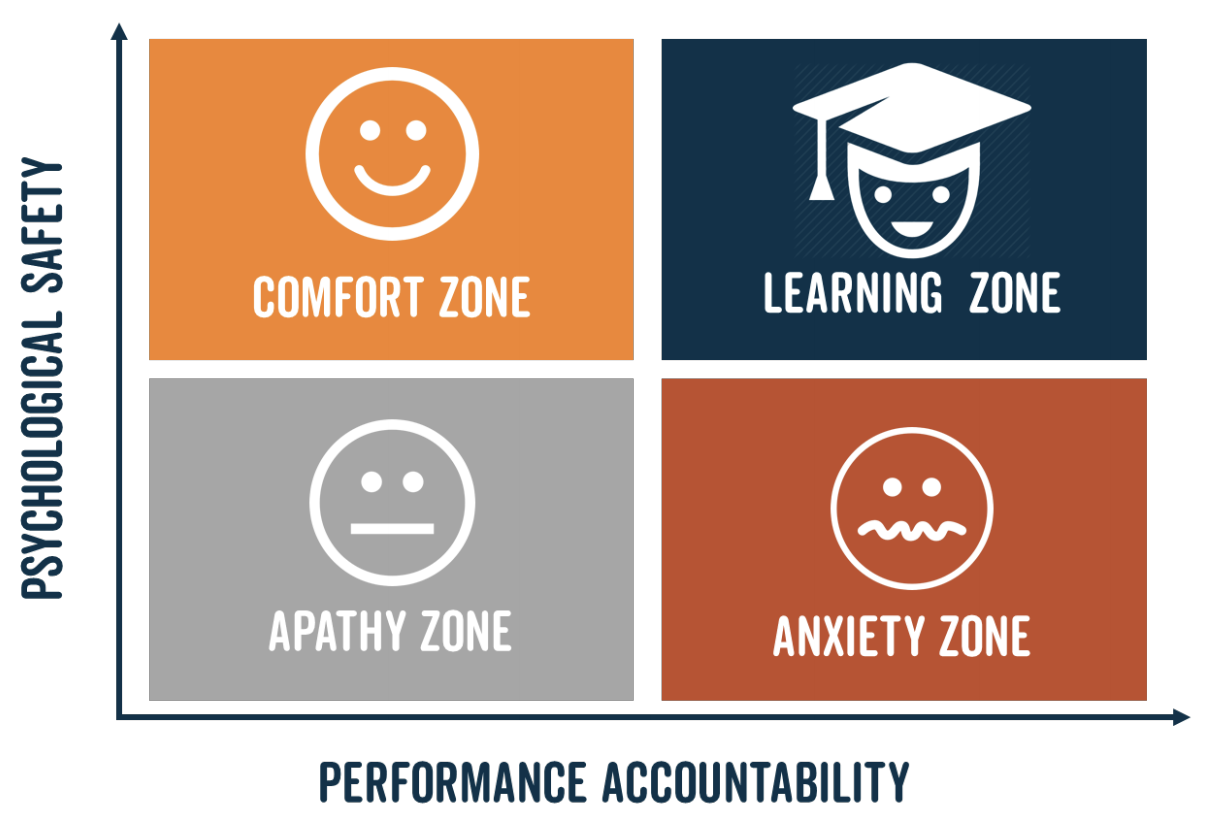I was sitting in a leadership team meeting at my school last year, and we were discussing next steps for moving our school forward. A suggestion was made, not by me, and we decided that was the right step to take.
Fast forward a couple months, and there was some complaining about the decision that was made. A staff member came to me and said that everyone in the staff was afraid of me. Not only did that hurt, but I thought, that can’t be true! I’m the nicest guy I know!
I asked someone that I knew could tell me the truth, and she told me something very powerful. She said, “I wouldn’t say that I am afraid of you, but I would say that you are so laser-focused on doing what’s best for kids, that you will be fine with me being uncomfortable if it means that we are going to do something better for kids. I’m not afraid of you as a person, but I am afraid that you’re going to ask me to sacrifice a lot to support our students.”
She’s right, I realized.
Sometimes, in my zeal to do what’s best for kids, I do put the adults’ needs and concern for safety on the back burner. Lest anyone judge me too harshly, I put my own needs and concern for safety on the back burner, as well.
A few months laster, while doing some research for my podcast, I ran across a TEDx talk by Amy Edmonson. In it, she talked about the importance of having a psychologically safe workplace. What does that even mean?
A psychologically safe workplace is one where there is learning happening. I love this graphic, similar to the one that Dr. Emonson uses in her TEDx talk.
 I start with the picture because visuals are important. But also to help talk about the different quadrants where we can find ourselves.
I’m going to talk about the different areas specifically:
I start with the picture because visuals are important. But also to help talk about the different quadrants where we can find ourselves.
I’m going to talk about the different areas specifically:
Apathy Zone
You’ve all seen this, this is where nobody cares what you’re doing or how you’re doing it. It the old TGIF and #hatemondays problem we so often see. You’re just trying to get through the week, and you don’t care about any part of it.
Comfort Zone
In this zone, you feel so psychologically safe that nobody will ever say anything that could possibly hurt your feelings or make you feel like you are anything but the perfect educator. I actually found myself in this zone after a supervisor said (in my first year in the district) that she had never written a better evaluation of a principal. Gee thanks, that’s great, but how can I grow with that kind of feedback? This is where we all always want to be, but we know it is not the best place. We are showered with praise and adoration, but it feels like feedback is a growth Twinkie - all empty calories and no substance. We are always eating and never satisfied.
Anxiety Zone
This is the zone that I unintentionally found myself. I thought that I was creating a psychologically safe workplace, but my expectations were so high, and I was apparently so unforgiving in my actions, that my team felt that they could not make a mistake without incurring my wrath. Here’s the challenge about the anxiety zone: it is, like most important things, a very personal situation. Not all my staff were in the anxiety zone, but enough were that it was challenging for them. A few of my staff LOVED that I took away the performance accountability of certain structures (lesson plans, observations) but that accountability shifted to other areas that were less black and white. For example, if you turn in your lesson plans on time, you are being accountable and doing your job. If you are doing all the things in the Danielson evaluation framework, you are being accountable and doing your job. On the other hand, my expectations were to adapt your lesson to meet the needs of your students. That was very challenging for some people who believed “It is my job to teach and their job to learn.” I changed that script to “It is our job to find the barriers that are keeping them from learning and help them overcome them.” This is a very different script. Through my leadership, I was creating anxiety for teachers because of my expectations. That’s not a good way to lead. It makes it really difficult for them to feel like they can even try something new. I thought giving a free pass on traditional school structures was increasing their psychological safety, but it was creating more anxiety for them, because their beloved model was being blown up!
Learning Zone
The learning zone is where some teachers found a happy medium. You remember that teacher that I could trust to tell me the truth? I have had more crucial conversations with her than any other teacher in the building. Why did we trust each other? Because we had built psychological safety. Google’s Project Aristotle defines psychological safety by asking, “How comfortable do you feel taking risks on the team without feeling insecure or embarrassed?” The teachers and staff in the anxiety zone felt insecure or embarrassed when they took risks, instead of feeling confident that making a mistake wasn’t the end of the world. The teachers and staff in the learning zone took critical feedback, gave critical feedback, and knew that if there were mistakes made, we could move on easily. They felt comfortable when they took risks, because they knew that they would be held accountable and they knew that they would also have support and not be destroyed because of the mistakes they made.
How to become psychologically safe at work
In order to have a psychologically safe workplace, we need to talk about our mistakes. When we talk about our mistakes, we normalize the behavior. When we talk about our mistakes we learn from our mistakes. Dr. Edmonson talks about some research she did to determine how many mistakes the most highly effective teams in hospitals made. She found that the highest performing team made the most mistakes. What she surmised from that observation is that they probably made no more mistakes than the others, but they were much more willing to talk about them than the other teams.
In the New Team Habits book, Kim, Lai, and Mascareñaz define the three steps leaders need to take to help their teams share mistakes and LEARN from them:
- Frame the work as a learning problem: “We’ve never been here before; we can’t know what will happen; we’ve got to have everybody’s brains and voices in the game.”
- Acknowledge your own fallibility: “I may miss something, I need to hear from you.”
- Model curiosity: “Every time we withhold, we rob ourselves and our colleagues of small moments of learning.”
I understand now where I went wrong. You see, I had already done the things that I was asking the teachers to do, but they had not. I was coming in with my own experiences and confidence that these things could work (because they do). The challenge that I faced was how could I help my team learn the same things that I knew, but do it in their own way? These three suggestions from the New Team Habits book are powerful keys to helping you and me create psychologically safe workplaces.
If you want to get more information about this and other thoughts, sign up for life-changing stories and experiences:

